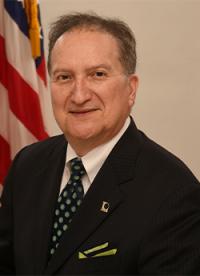AHRQ Views: Blog posts from AHRQ leaders
New Guide Offers Strategies To Reduce Clinician Burdens
APR
24
2023

In recent years, primary care physicians have struggled with burnout brought on by a confluence of factors—more patients with multiple health problems, paperwork requirements for reimbursement, and complications overcoming delay, deny, and defend tactics of health insurers. Due to COVID-19, persistent staff shortages and patients’ urgent mental health needs have intensified these pressures.
A Commonwealth Fund survey published last fall offered important insights into the pandemic’s impact on U.S. primary care physicians: those under the age of 55 were most likely to report burnout; most physicians with emotional stress did not seek help; and more than 1 in 4 experiencing stress or burnout reported the quality of care they provided had worsened.
This month, AHRQ added an important new resource to help mitigate clinicians’ burdens: Burnout in Primary Care—Assessing and Addressing it in Your Practice (PDF, 1.6 MB). It recognizes the challenges facing primary care, including workforce shortages, care for an aging population with increasingly complex medical needs, and the difficulties of providing coordinated care in a healthcare system that too often falters due to fragmentation and misaligned payment incentives.
Burnout in Primary Care recognizes that addressing the problem is not about asking individual clinicians to try or work harder; rather, it’s about building safer and more supportive systems for clinicians to work in. It provides primary care leaders with validated tools, such as assessment instruments and proven strategies to help identify and address the root causes of staff burnout within organizations.
Burnout in Primary Care allows individual organizations to tackle burnout according to their unique organizational needs. For example, for practices wishing to measure staff burnout, the tool offers a variety of survey instruments that offer choices based on the intended audience, cost, and other considerations.
Additionally, AHRQ’s resource provides tips, guidance, and tools from trusted organizations that address clinician and healthcare worker burnout, including the National Academy of Medicine, the American Medical Association, and the U.S. Surgeon General.
Burnout in Primary Care offers strategies to address the root causes of workplace stress, including:
- Tactics to reduce the time physicians spend on clerical tasks like documentation, order entry, billing, and coding.
- Team-based care ideas to boost staff satisfaction, including effective use of huddles, pre-visit planning, and tactics to enhance workflows.
- Examples of work-life balance programs to help clinicians and staff restore professional and personal wellness.
- Strategies for building strong social connections within a practice, from peer support and coaching to buddy programs.
- Suggestions on reviewing incentives, payment, and other policies to ensure workplaces don’t encourage overwork or unhealthy behaviors.
AHRQ’s new resource complements previous efforts to address burnout. The Agency has funded dozens of studies on clinician burnout and well-being, including the work of grantee Mark Linzer, M.D., who developed a tool used by thousands of medical providers to measure and identify causes of stress and burnout. A primer published by AHRQ’s Patient Safety Network in 2022 and an AHRQ-funded essay published this year provided important analyses of burnout’s causes and potential solutions.
With the new Burnout in Primary Care resource, AHRQ offers nationwide primary care practices and healthcare systems tangible ways to assess and address the burnout crisis and promote staff well-being for a more engaged workforce. It represents a vital step forward in the journey toward improved workforce satisfaction and, ultimately, better, and safer patient care.
Robert Otto Valdez, Ph.D., M.H.S.A., is Director of AHRQ.
Get more AHRQ news, sign up for AHRQ news via email and follow AHRQ on Twitter, LinkedIn, Facebook, and YouTube.



